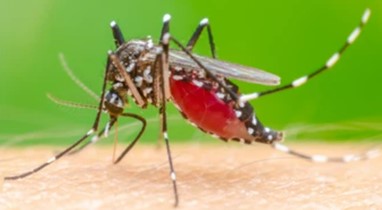Gene Editing in Aedes Aegypti

Aedes aegypti is a mosquito that can spread dengue fever, chikungunya, Zika fever, Mayaro and yellow fever viruses, and other disease agents. There are three methods used to control the population of aedes aegypti. Pyrethroids are commonly used as insecticides, this widespread use of pyrethroids and DDT has caused Knockdown resistance (kdr) mutations. Aedes aegypti has been genetically modified to suppress its own species in an approach similar to the sterile insect technique, thereby reducing the risk of disease. The last method is infection with Wolbachia. In 2017 Alphabet, Inc. started the Debug Project to infect males of this species with Wolbachia bacteria.
Our Services for Gene Editing in Aedes Aegypti
Aedes aegypti is a vector for transmitting numerous pathogens. it is associated with 54 viruses and 2 species of Plasmodium. It poses a great risk to human safety, and it is therefore imperative to continuously search for new ways to control such transmission routes. Lifeasible provides gene editing services for aedes aegypti with zinc-finger nucleases (ZFNs), transcription activator-like effector nucleases (TALEN) and CRISPR/Cas9 to control them.
| Editable genes |
Relevant traits exhibited after editing |
| AePGRP-S2 |
- We can edit the AePGRP-S2 gene in aedes aegypti to affect the immune system by interfering the recognition of the peptidoglycan of foreign microorganisms and initiating an immune mechanism that reduces the impact of the microorganisms on the insects themselves.
|
| CLIPs |
- We can edit eight CLIPs genes in aedes aegypti to affect the innate immunity in aedes aegypti functionally, and two genes, CLIPB15 and CLIPB22, affect the ability of adult mosquitoes to resist microbial infestation and have an effect on both the Toll pathway and the melanization pathway.
|
| Ae-DDC |
- We can knockout or knockdown the Ae-DDC gene to reduce the egg production significantly and hatching rate of aedes aegypti females and through regulating egg formation to development to decrease the ability of eggs to resist desiccation.
|
| aa NAT |
- We can edit the members of the aa NAT gene family identified in aedes aegypti to affect important physiological functions such as epidermal sclerosis, inhibition of melanin deposition and inactivation of neurotransmitters, and regulate both metabolism and behavior, making them as a potential target for insecticides.
|
| Aael-yellow-c |
- We can edit the Aael-yellow-c to affect mosquitoes to suck blood mainly by inhibiting ADP-induced platelet aggregation.
|
| ORs |
- We can edit the ORs, to affect host-seeking, blood-sucking, and egg-laying behaviors of aedes aegypti.
|
Advantages
- Editing of immune-related genes, affects the innate immune system of aedes aegypti and resistance to pathogenic bacterial infections.
- Edit genes for egg formation and egg development processes that regulate egg formation and development in aedes aegypti.
- Edit biosynthetic pathway genes to disturb the biosynthesis and metabolism of aedes aegypti like inactivation of neurotransmitters.
- Edit reproduction-related genes affect the reproduction behavior of aedes aegypti.
Lifeasible offers three means include ZFNs, TALEN and CRISPR/Cas9 for aedes aegypti to the service of gene editing through interfering the immune system, and the biosynthesis and metabolism of aedes aegypti to control this organism. If you are interested in our services or if you have any questions, please click online inquiry for more detailed information.
Reference
- Matthews, B.J. Aedes aegypti. Trends Genet, 2019, 35(6): 470-471.
For research or industrial raw materials, not for personal medical use!
